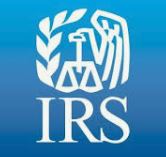
(Special Note: Read To End Regarding Wealthfront $25,000 Giveaway On April 16th 2020)
The CARES Act, which was signed into law on March 27, is a $2 trillion stimulus package to help Americans cope with the economic fallout caused by the spread of COVID-19. We know these are difficult times, and it’s not always easy to figure out these policies on your own. We want to help. There are a variety of provisions in this bill that put money in your pocket, whether you’ve lost your job or you need to withdraw from your retirement accounts early. We’ve compiled a list of the ways you can benefit from the CARES Act and how to take advantage of them:
1. There’s a new deadline to file and pay your federal taxes
The CARES Act changes the federal tax filing and payment deadline from April 15 to July 15, meaning you’ll have an additional three months to file your federal tax return and pay any taxes you owe. In the meantime, money you owe can earn interest for you. That said, if you expect to receive a refund, we recommend filing ASAP so you can take advantage of your refund sooner. State filing and payment deadlines vary and aren’t always the same as the federal deadlines. Check with your state tax agency for those details. You can find more information here.
2. There’s a new deadline to make IRA contributions
If you’ve been planning to contribute to an IRA for the 2019 tax year, you now have three extra months to do so. As a reminder, the maximum allowable contribution for 2019 is $6,000 if you are under 50, and $7,000 if you are 50 or older. For more information about IRAs, check out our recent blog post and our IRA Account Selection Tool.
3. Depending on your income, you could get a direct payment from the IRS
If you earn $75,000 or less as a single filer, you’re likely eligible for a $1,200 payment. If you are married, file jointly, and earn $150,000 or less, you’re likely eligible for a $2,400 payment. Your income is determined based on your 2019 taxes if you have already filed. If not, they’re based on your 2018 tax return.
Read More



























Recent Comments